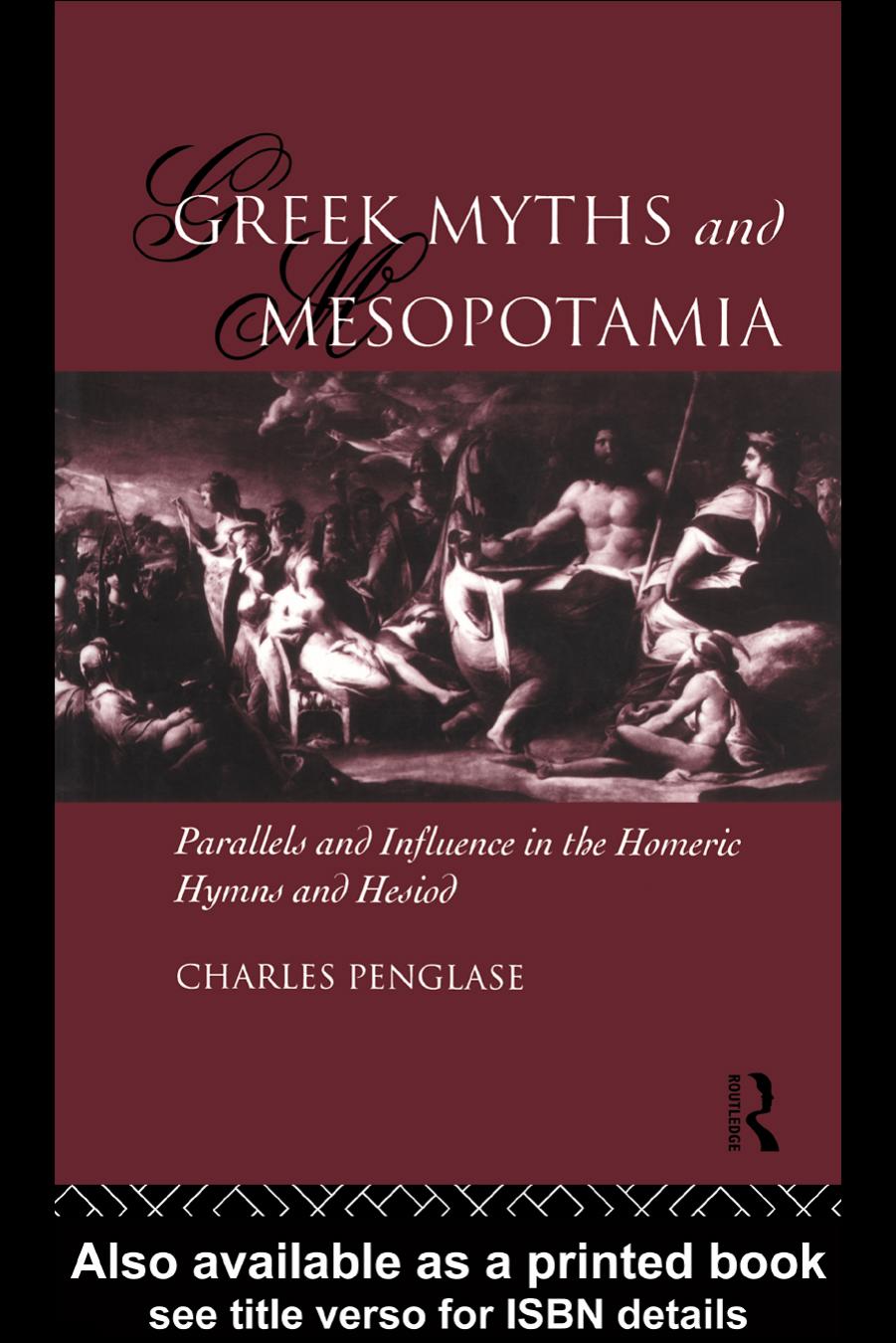Greek Myths and Mesopotamia: Parallels and Influence in the Homeric Hymns and Hesiod by Charles Penglase

Author:Charles Penglase [Penglase, Charles]
Language: eng
Format: epub, pdf
Publisher: Taylor and Francis
Published: 2003-10-04T06:00:00+00:00
Another parallel with ID is that Persephoneâs journey results in the instigation of the perpetual annual descent-and-return fertility cycle (lines 398â400, 463â5), as seen in ID (lines 407â9) with Geshtinanna and Dumuzi. Although the substitutionary idea seems also to be suggested at the end of edin-na ú-sa - á, the instigation of the cycle is not mentioned in this text.34 The hymn also presents the same motif as that clearly expressed in ID, the partition of the yearâ although here it is a tripartite division, rather than bi-annual as in the case of Dumuzi and Geshtinanna. However, the earlier Greek divisions appear to have been bi-annual, so Persephoneâs stay in the netherworld for a third of the year may represent a change from the two-part to the three-part year. The division into three may also be a reflection of the cosmological idea of the tripartite universe, a motif mentioned in Hadesâ one-third share of the cosmos.35 Instead of the substitutionary system performed by Dumuzi and Geshtinanna, each spending half of the year in the netherworld, Persephone descends and returns by herself. Her annual journey with its results of fertility is like the annual journey of Damu. Her residence in the netherworld has the effect of dearth of fertility and prosperity on earth: similarly, at the beginning of TRS 8 Damuâs mother fears that her son will not return, with the consequence of loss of fertility and prosperity. This is, of course, the application of the journey for power with Damu in his myths: by his annual descent and return he has the power to fulfil his functions of bringing fertility and resulting prosperity to the inhabitants of the land. Although Persephoneâs annual return coincides with the return of fertility of the earth in spring, the aspect of her power in bringing fertility and prosperity every year as a result of her performance of the perpetual cycle is not stressed in the hymn. The concern is rather with the establishment of Persephoneâs power in the netherworld and upperworld, as seen likewise in ID and AV. The function of bringing prosperity, seen with Damu in his myths, seems to lie specifically with the young male Ploutos in the hymn, rather than with Persephone, as can be seen at the end of the hymn, when the statement is made that the goddesses send Ploutos who gives abundance ()to mortal men (lines 488â9).
In these myths of the goddesses, the great netherworld oath of the gods seems to have a certain role concerning the acquisition of life. In the Demophoon episode, Demeter swears the netherworld oath, the oath of Styx, which is the highest oath of the gods, and she swears it when she angrily states that she would have made Demophoon immortal (lines 259â61):
For know that, oath of the gods and pitiless water of Styx, I would surely have made your dear son unageing all his days and granted him imperishable honour.
Download
Greek Myths and Mesopotamia: Parallels and Influence in the Homeric Hymns and Hesiod by Charles Penglase.pdf
This site does not store any files on its server. We only index and link to content provided by other sites. Please contact the content providers to delete copyright contents if any and email us, we'll remove relevant links or contents immediately.
| Africa | Americas |
| Arctic & Antarctica | Asia |
| Australia & Oceania | Europe |
| Middle East | Russia |
| United States | World |
| Ancient Civilizations | Military |
| Historical Study & Educational Resources |
The Daily Stoic by Holiday Ryan & Hanselman Stephen(2708)
The Fate of Rome: Climate, Disease, and the End of an Empire (The Princeton History of the Ancient World) by Kyle Harper(2436)
People of the Earth: An Introduction to World Prehistory by Dr. Brian Fagan & Nadia Durrani(2346)
Ancient Worlds by Michael Scott(2103)
Babylon's Ark by Lawrence Anthony(2070)
Foreign Devils on the Silk Road: The Search for the Lost Treasures of Central Asia by Peter Hopkirk(2056)
India's Ancient Past by R.S. Sharma(1987)
MOSES THE EGYPTIAN by Jan Assmann(1972)
The Complete Dead Sea Scrolls in English (7th Edition) (Penguin Classics) by Geza Vermes(1840)
Lost Technologies of Ancient Egypt by Christopher Dunn(1798)
The Daily Stoic by Ryan Holiday & Stephen Hanselman(1768)
The Earth Chronicles Handbook by Zecharia Sitchin(1744)
24 Hours in Ancient Rome by Philip Matyszak(1678)
Alexander the Great by Philip Freeman(1648)
Aztec by Gary Jennings(1545)
The Nine Waves of Creation by Carl Johan Calleman(1520)
Curse Tablets and Binding Spells from the Ancient World by Gager John G.;(1510)
Before Atlantis by Frank Joseph(1484)
Earthmare: The Lost Book of Wars by Cergat(1468)
